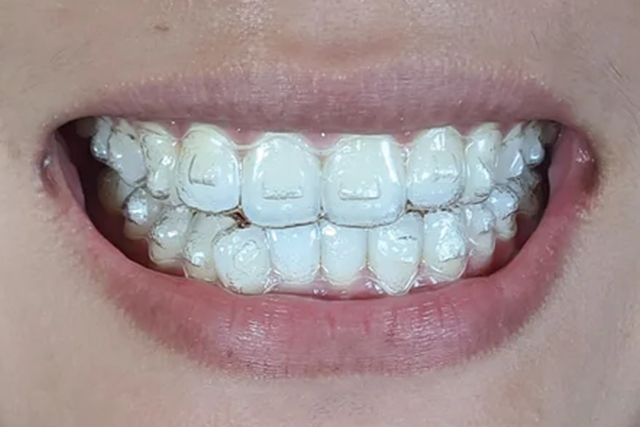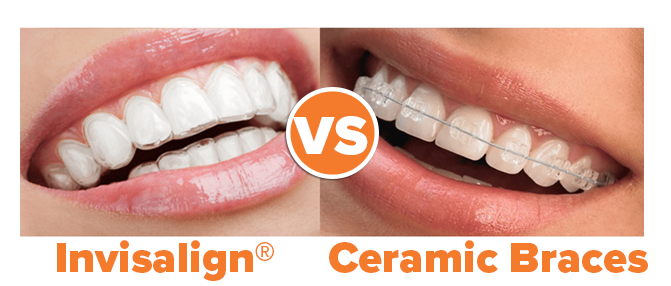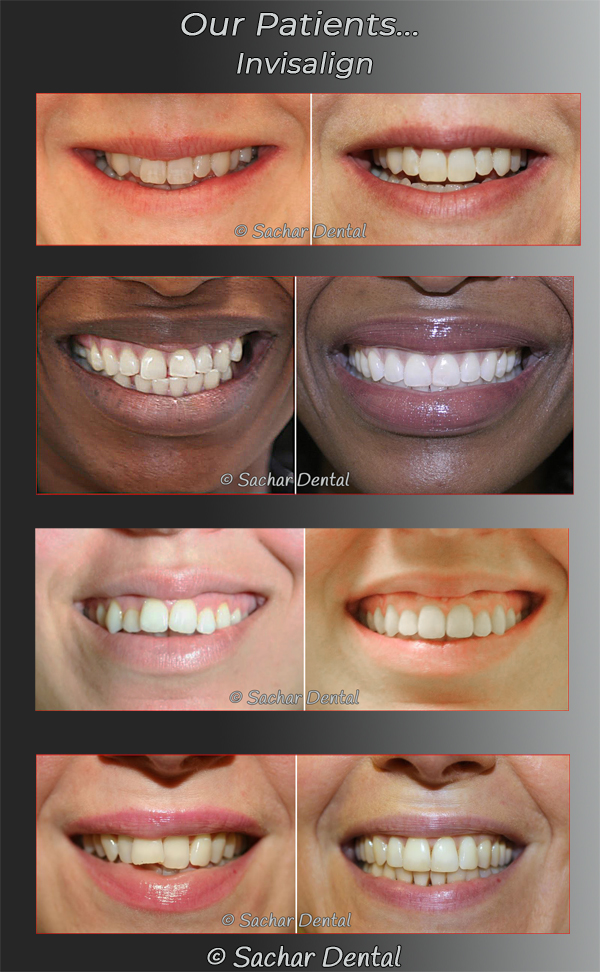Invisalign vs. Conventional Braces: Which Choice Is Right for You?
When thinking about orthodontic therapy, the choice between Invisalign and conventional dental braces presents a number of essential aspects that warrant cautious assessment. Invisalign uses a very discreet alternative with removable aligners, while conventional braces offer a much more visible yet efficient service for extreme misalignment. Each alternative encompasses unique benefits and drawbacks connected to visual appeals, comfort, treatment duration, and expense. Recognizing these subtleties is crucial for making an educated choice that straightens with your individual preferences and way of life. The inquiry continues to be: which choice will finest fulfill your orthodontic needs and assumptions?
Summary of Treatment Alternatives

In contrast, traditional dental braces contain metal braces and wires that are adhered to the teeth. This method applies continuous stress gradually to accomplish alignment. While reliable for complicated orthodontic problems, conventional dental braces need routine gos to for changes and can present difficulties in preserving oral health due to the difficulty of cleaning about cables and braces.
Both choices have their values, and the choice commonly rests on details dental conditions, way of life choices, and individual conformity. Inevitably, consulting an orthodontic specialist is essential for identifying one of the most ideal treatment plan tailored to specific requirements. Comprehending the subtleties of each alternative can considerably affect the total success of orthodontic treatment.
Aesthetic Considerations
A considerable aspect affecting the selection in between Invisalign and standard dental braces is the visual allure each therapy provides. Invisalign aligners are crafted from clear plastic, making them basically unseen when put on. This discreet appearance is particularly interesting grownups and teenagers who might feel uncomfortable about their orthodontic treatment. The ability to keep an all-natural smile throughout the positioning procedure can considerably improve the patient's self-confidence in professional and social setups.
On the other hand, typical dental braces contain steel brackets and wires, which can be a lot more noticeable. While advancements in orthodontic technology have actually led to the growth of smaller braces and colored elastics, typical braces still preserve a more noticeable account. For some individuals, the presence of dental braces may deter them from seeking required treatment.
Ultimately, the selection between Invisalign and typical dental braces may depend upon individual preferences relating to visual appeals. People who prioritize discernment usually lean towards Invisalign, while those that are less concerned concerning exposure might select standard dental braces. Recognizing the visual effects of each choice is vital for making a notified choice that straightens with one's lifestyle and preferences.
Convenience and Convenience

In regards to ease, Invisalign aligners are removable, making it possible for people to appreciate their favorite foods without constraint and keep ideal oral hygiene. Brushing and flossing are streamlined, as the aligners can be obtained throughout these regimens, whereas typical dental braces need cautious steering around wires and braces.
Additionally, Invisalign's progressive system allows for less orthodontic visits. Patients generally get several collections of aligners at as soon as, which can improve the therapy process and lower time spent in the orthodontist's chair. On the other hand, conventional braces require normal adjustments, making them less hassle-free for those with hectic schedules. Invisalign. In general, the convenience and convenience of Invisalign make it an enticing choice for several individuals seeking orthodontic therapy.
Therapy Duration and Effectiveness
While both Invisalign and conventional dental braces work in dealing with dental misalignments, the duration of treatment can vary substantially in between the 2 alternatives. Generally, Invisalign treatment can take anywhere from 12 to 18 months, depending upon the complexity of the situation. The clear aligners his explanation function by slowly moving teeth right into their preferred placements, and regular follow-ups with an orthodontist assistance make certain progress continues to be on the right track.
In comparison, conventional dental braces frequently need a longer dedication, generally varying from 18 months to three years. This results from their set nature and making use of cables and brackets, which can be much more efficient for intricate instances and severe misalignments (Invisalign). The therapy performance of typical braces is well-documented, as they enable precise adjustments and greater control over tooth movement
Eventually, the option in between Invisalign and conventional dental braces may hinge on both the anticipated therapy duration and the particular dental concerns handy. Consulting with an orthodontist is crucial, as they can supply customized referrals based upon private requirements, guaranteeing the chosen method aligns with preferred timeframes and outcomes.
Price Comparison and Insurance Choices
Price plays a significant role in the decision-making procedure for people considering orthodontic therapy, whether selecting Invisalign or typical braces. Generally, the cost of Invisalign ranges from $3,000 to $8,000, while conventional braces commonly cost in between $2,000 and $6,000. Aspects influencing these expenses consist of the intricacy of the instance, the duration of therapy, and geographical place.
Insurance protection can significantly impact out-of-pocket expenses. Many dental insurance strategies provide partial coverage for orthodontic treatments, yet the specifics can vary extensively. It is essential for clients to assess their insurance coverage to establish the extent of protection for either option. Generally, standard dental braces may be much more often covered by insurance policy plans contrasted to Invisalign, which some insurance providers categorize as a cosmetic procedure.
Furthermore, a number of orthodontic practices offer versatile repayment plans, making both treatment visit their website choices a lot more easily accessible. Patients need to inquire about prospective financing choices and discount rates for upfront settlements. Reviewing the total cost, including insurance policy benefits and payment strategies, is crucial for making an informed choice that aligns with both visual preferences and budget plan considerations.

Verdict
In recap, the option between Invisalign and conventional dental braces rests on multiple factors, consisting of visual choices, convenience, therapy period, and cost. Invisalign offers a very discreet, detachable alternative that helps with dental hygiene and nutritional adaptability, while conventional braces may be a lot more appropriate for complex dental concerns and typically come with a lower cost factor. Ultimately, consultation with an orthodontist is important to assess individual situations and establish the most ideal therapy choice for attaining optimum dental alignment.
When thinking about orthodontic treatment, the selection in between Invisalign and conventional braces offers numerous important factors that merit careful examination.Contrasting Invisalign and standard dental braces exposes unique therapy options for orthodontic correction.While both Invisalign and typical braces are efficient in dealing with oral misalignments, the period of treatment can vary dramatically in between the two options.Expense plays a significant function in the decision-making procedure for individuals taking into consideration orthodontic treatment, whether deciding for Invisalign or typical braces.In summary, the selection between Invisalign and traditional braces pivots on numerous factors, consisting of aesthetic click this link preferences, comfort, therapy duration, and expense.